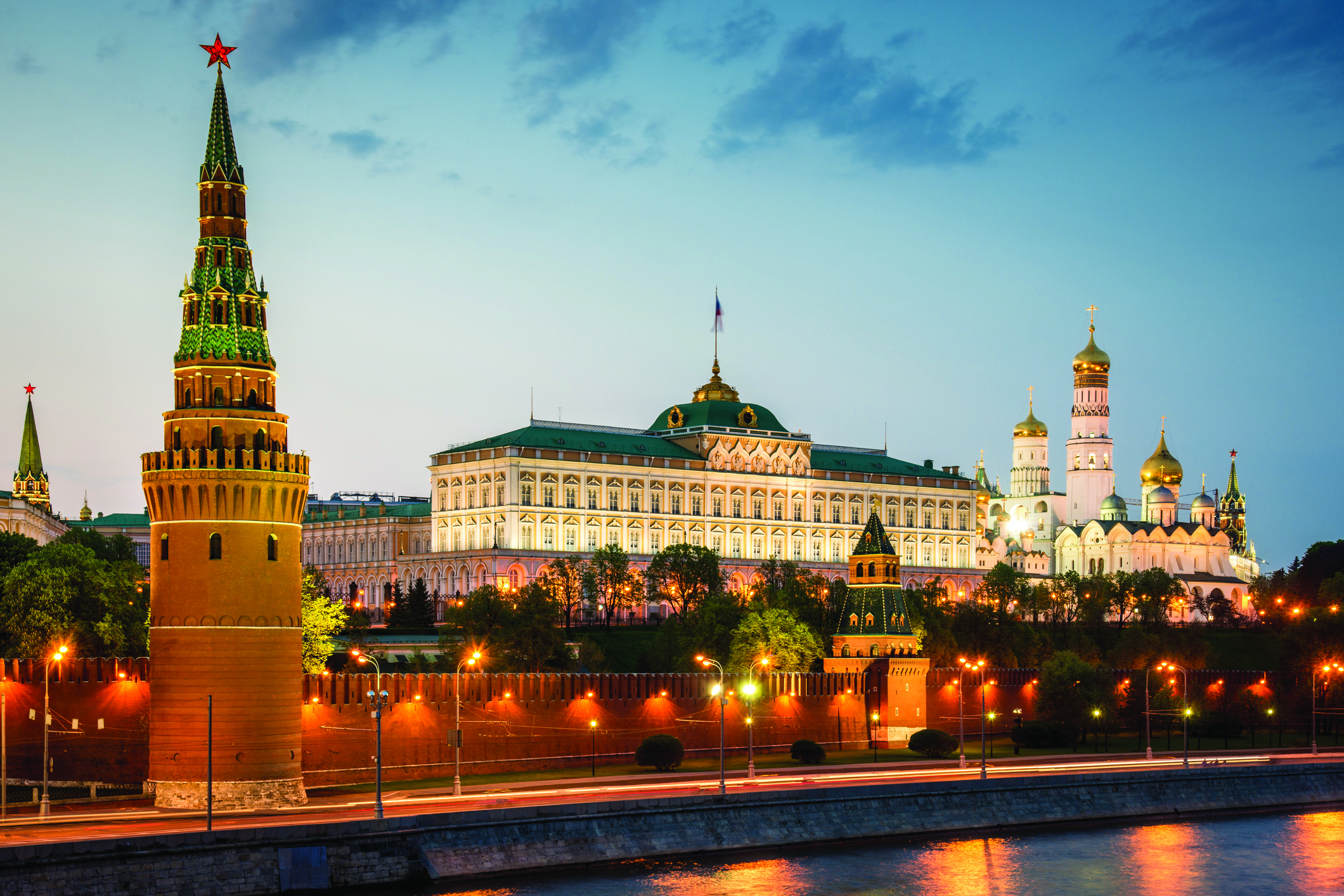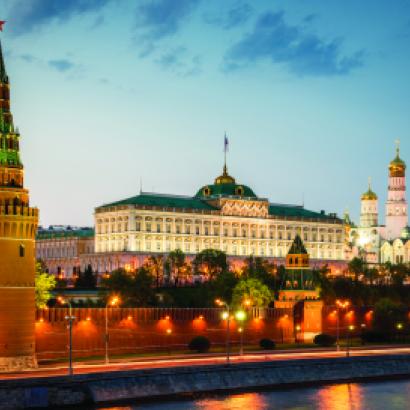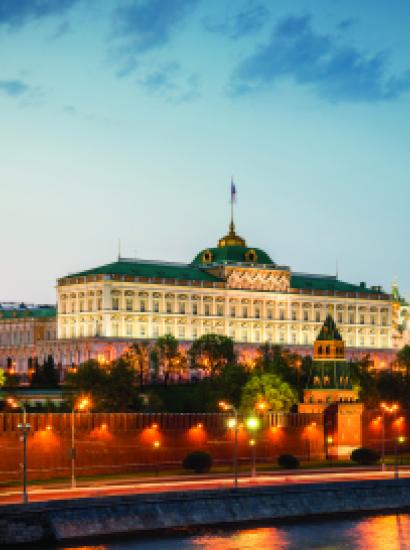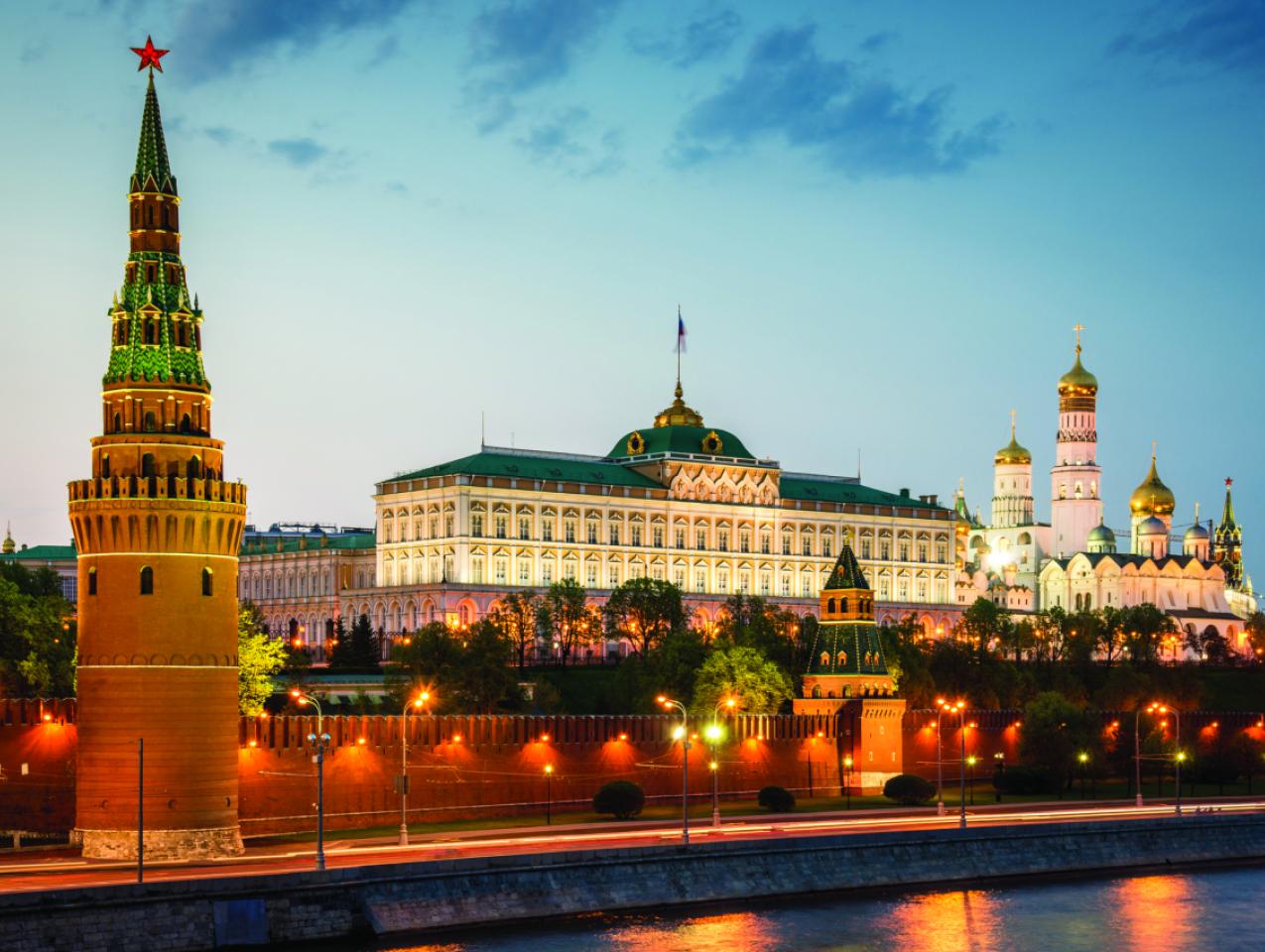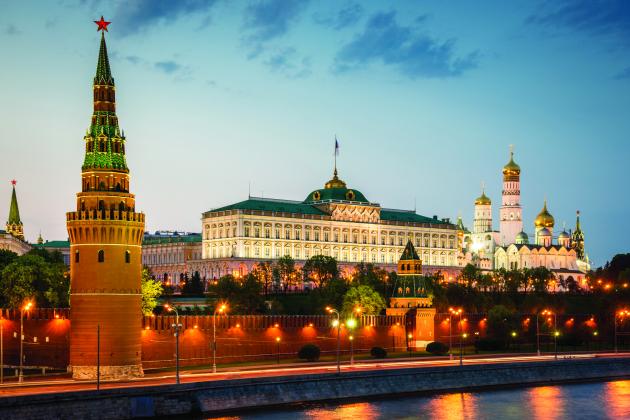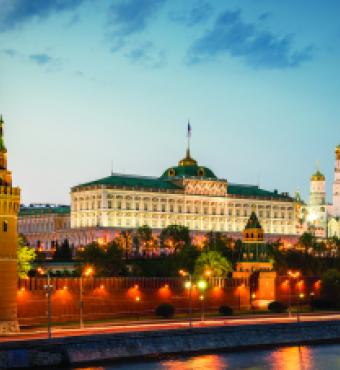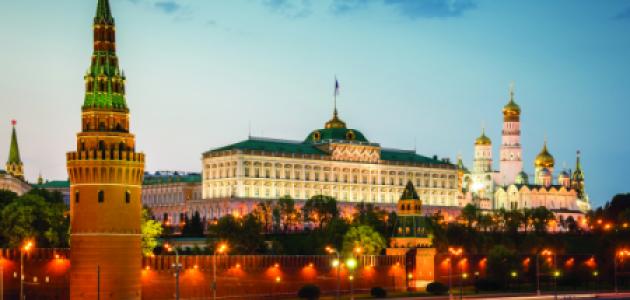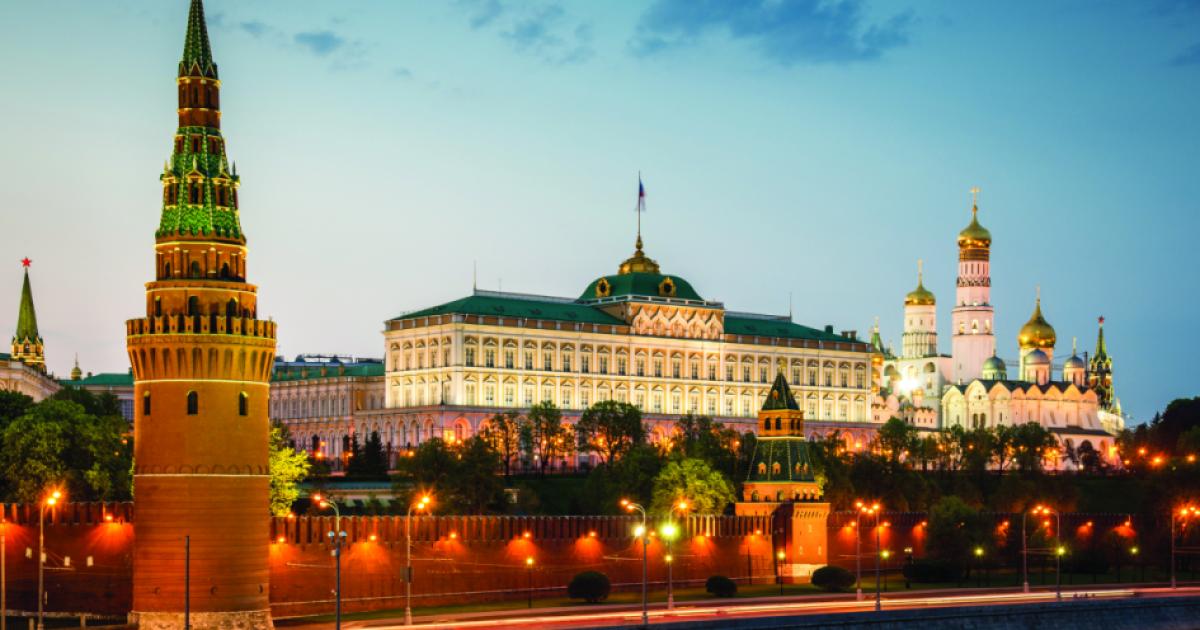- Economics
- Politics, Institutions, and Public Opinion
For it is the solecism of power, to think to command the end, and yet not to endure the mean.
Francis Bacon, Of Empire (1625)
Introduction
Nearly every discussion about Russia raises three questions: Who is to blame? What is to be done? And where is Russia heading? This paper focuses on the third question, though the other two cannot be ignored entirely.
Now is a particularly appropriate time to ask where Russia is headed, for the world is undergoing profound and rapid transformation at several levels. We are witnessing dramatic technological changes – the use of 3D printing to produce guns is one topical example. More broadly, as our debates about Artificial Intelligence (AI) demonstrate, we are conscious that technological change will create new possibilities that inspire both great hope and great fear. There are, besides, unsettling changes in the international economic and political order. And to add to that, we confront demographic shifts and climate change, which are likely to acquire growing significance in the longer term. These processes of change and transformation – technological, economic, demographic, and climatic – present great challenges for governance at all levels. How can we direct these processes to our advantage while avoiding the dangers that they create? How will Russia respond?
The Stabilization of Russia
Over the last thirty years Russia has undergone its own profound and dramatic crisis of governance. Its borders have changed; it has lost almost a quarter of the territory it had as the Soviet Union. Its population has been cut in half, from 293 million in 1991 to 146 million in 2018. (The annexation of Crimea added two million.) Its demography has changed: ethnic Russians, who made up about 50 percent of the Soviet population, are close to 80 percent of the population of the Russian Federation. The collapse of the system of central planning created an economic crisis in which GDP dropped by close to 50 percent between 1989 and 1998. Economic inequality has widened enormously in Russia since the fall of the Soviet Union, more so than in the states of Central Europe. Russia now has a Gini coefficient comparable to that of the United States.
The transition from central planning to a market economy was a traumatic experience for the society. The statistics on life expectancy register that trauma. Life expectancy for men fell from 64.84 years in 1987 to 57.55 in 1994; by 2016 it had recovered to 66.51 years. For women it fell from 74.53 years in 1988 to 71.2 in 1993; by 2016 it stood at 76.93 years. The OECD has explained these figures as a consequence of the impact of the economic transition in the 1990s and a rise in “risk-increasing behavior,” such as drinking and smoking, among men.
From the very beginning of his presidency, Vladimir Putin’s response to the crisis of the 1990s has been to strengthen the Russian state by recreating the “vertical of power” at home and reinstating Russia as a great power in world politics. There has been success on both of these counts. A combination of sound economic policy and rising oil prices ended the downward spiral of the economy and restored Russian GDP to its 1989 level by 2006/7. Inflation was brought largely under control in the early years of this century, and wages and pensions began to be paid with regularity. There was a steady rise in per capita income. Life expectancy, as noted above, began to improve. Economic stabilization has been a major goal of Putin’s policies, and his success in the early 2000s has been a major source of his political support. When Boris Yeltsin stepped down as president in 1999, his approval rating was 2 percent; Putin’s rating has not fallen below 60 percent. Putin’s popularity has been personal. The government’s approval rating has been consistently below Putin’s, sometimes by over 20 points.
Putin’s rule has been personal too and has shifted steadily toward authoritarianism, largely eradicating the democratic initiatives that had emerged in the 1990s. The legislature now provides an ineffectual counterweight to the executive; opposition leaders have been muzzled; the subjects of the federation have lost much of their autonomy; the security services, which are not subject to democratic control, have acquired a central role in government; the mass media are largely controlled by the government; there is a high level of corruption (Russia ranks 135 out of 180 states, according to Transparency International); and the rule of law is weak. Stabilization has been achieved under Putin, but the political cost has been high.
Russia did not opt for the path of (more or less graceful) post-imperial decline that the British and French followed after World War II. On the contrary, Russia, in the eyes of its new leaders, was a great power – even “condemned” to be a great power – by virtue of its size and its Eurasian geography, its status as a nuclear superpower, its role in saving Europe from Napoleon and Hitler, not to mention its contributions to the cultural and spiritual richness of humanity. Russia was weak, of course, in the 1990s, though it still had a strategic nuclear deterrent, and that, according to Putin, “enabled us to maintain our national sovereignty during the extremely difficult 1990s, when, to be frank, we didn’t have anything else to argue with.” Russia now invoked its national interests, not the class interests of the Soviet period or the human interests of the Gorbachev years. In the context of geopolitics, the enlargement of the European Union, and more especially of NATO, were seen as unfriendly actions, threatening Russia’s status as a great power.
Putin’s assertion of Russian power has been popular at home – especially the annexation of Crimea. Russian policies in Ukraine and Russian hacking in elections have, however, contributed to a sharp downturn in relations with the West and in particular with the United States. Sanctions have been imposed on Russia, causing economic harm. Are Russia’s domestic and foreign policies in contradiction with each other? One answer might be that the economic losses are outweighed by the gain in legitimacy that comes from the assertion of Russian power in the face of a hostile West.
A more serious question is whether the institutions and instruments through which stabilization has been achieved – the Putin system, if you like – are now inhibiting modernization of the economy. Modernization has been a goal of policy under Putin, but it has been a secondary to stabilization. Now, however, the Russian economy is performing much less well than it did in the early years of the century. Alexei Kudrin, a former finance minister, has argued in a report requested by Putin, that Russia is in a lengthy period of slow growth, not only as a result of lower oil prices of and sanctions, but more fundamentally because of institutional and structural problems in Russia itself.1[1]The demographic crisis and technological backwardness are part of the problem, in Kudrin’s view, but he has argued that broad reforms are needed in government administration, in the education system, and especially in the judicial system, so that disputes can be resolved without bribes or pressure on judges; an independent judiciary is the most important thing. These are not trivial recommendations and they would run up against entrenched interests in the Putin system.
Kudrin’s diagnosis of Russia’s condition raises a serious question. Can the Putin system provide both stability and growth? Modernizers argue that reform must take precedence because without it the system will become unstable and Russia will lose its status as a great power. Opponents fear that the state might unravel again, as it did in 1990-1991; they point to the travails of liberal democracy worldwide to discredit it; and they worry that democracy might limit sovereignty by subjecting Russia to Western normative dictates.2[2]The demographic challenge
Russia faces a demographic crisis. Its population is declining and is projected to continue falling. The latest UN estimate of Russia’s population in 2050 is 132.7 million, a significant drop from 146 million today. (These estimates change over time; the 2009 UN estimate for 2050 was 116 million.) Life expectancy stagnated after 1960, and after the collapse of the Soviet Union it began to decline, as noted above. The fertility rate dropped to the replacement figure of 2.1 births per woman in 1970 and stabilized at just below that rate until it fell to 1.25 after the Soviet collapse. It has since returned to 1.7, still well below the replacement rate. There is now an echo of the low birthrate in the 1990s in the fall in the number of births in 2016/17.
The demographic crisis has been a matter of concern to the Russian government, which has sought to raise the fertility rate by offering incentives to families so that women have more children and mothers are able to work. Among the measures adopted are: payments to mothers, mortgages for families with children, parental leave, childcare services, kindergartens, day nurseries etc. These measures will be continued, Putin announced in his 1 March 2018 address to the Federal Assembly.3[3]An important reason for the government’s concern has been the decline of the working-age population. Putin drew attention to this in his address. The working-age population fell by one million in 2017. Kudrin estimated that between 2015 and 2030 the number of people in the younger generation (20-39) would decline by 10.1 million, while the older generation (40-59) would increase by only 3.2 million. One way to deal with this, he suggested, was by gradually raising the pension age for women from 55 to 63 and for men from 60 to 65. By his calculation this would increase the working-age population by about nine million in 2030.
The Russian government adopted this proposal in June 2018. If enacted into law, it would go fully into effect for men in 2028 and for women in 2034. This would increase the working-age population by keeping people at work for longer. It would also reduce the amount to be paid by the state for pensions – an argument made by Putin to justify the new policy. The law, which had its first parliamentary reading in July, has elicited widespread public protest in the form of a petition against the bill and demonstrations in many cities. Among the slogans displayed were: “Pension off Putin” and “We want to live on our pensions, not die at work.” Putin’s approval rating fell from 79 percent in May to 67 percent in July, a drop explained by some commentators as a reaction to the proposed new law. On 29 August he modified the law by proposing that the retirement age for women be raised to 60 not 63.
According to a report published in 2015 by the Russian Presidential Academy of National Economy and Public Administration, the number of people aged 20-40 will fall by half in the next 20 years, while in ten years the number of people aged 20–30 will drop by almost 50 percent. In other words, the number of people with the greatest potential for childbirth and active work is declining steeply. As the report points out, “the current generation, while still abundant, is called to resolve two tasks which are generally hard to resolve at the same time – to give birth to a large number of children and to build a new modern economy.” Raising the pension age will expand the working-age population but will do little or nothing to increase the birth rate.
Between 1991 and 2015 11.8 million people migrated to Russia, and 5.3 million emigrated – a net gain of 6.5 million. Most of the immigrants came from the former Soviet Union, from countries that have demographic profiles similar to Russia’s. That flow has slowed down now. It is unlikely that immigration will solve the Russian demographic crisis, unless the pattern of immigration changes significantly. As the Presidential Academy’s report concludes, “there is no hope of fully solving the potential demographic crisis in Russia by relying mainly on immigration.” The Russian government has simplified entry into Russia for temporary workers. The number of permits issued per year reached a high of 3.75 million in 2014, falling to just over 1.5 million in 2016. These workers mainly perform low-skilled jobs.
The Information and Communications Revolution
The Soviet Union made serious efforts to prevent its citizens from gaining access to information it did not want them to have. All published materials were subject to censorship. Very large sums were spent on jamming foreign radio stations. Access to xerox machines was limited to prevent the spread of dissident ideas. Samizdat was painstakingly produced on typewriters with a few carbon copies. That all began to change in the late 1980s and soon the citizens of the Soviet Union (and then Russia) had access to a bewildering array of information from domestic and foreign sources. With the advent of the internet that access increased greatly. (About 75 percent of Russians have access to the internet, the same as the percentage of Americans.) Social media have created a new form of communication connecting Russians with one another and with people outside Russia. (47 percent of Russian internet users used social media in January 2018 compared with 71 percent of American internet users.)
The move from a closed to an open society was an important break with the Soviet past. It offered the prospect of a lively public sphere in which well-informed citizens could conduct debates about politics and policy. Yet the transition from a closed to an open society has been complex and incomplete. It has raised questions about ownership and control of the media and about the role of the media in society. After a period in which media outlets were privately owned, they have come increasingly under state control. The overwhelming majority of the mass media – television and national newspapers – propagate the government line to a greater or lesser degree. Reporters without Borders ranks Russia 148th out of 180 countries in terms of press freedom (the US ranks 45th and China 176th). There are independent voices, but their independence is conditional on the good will of the government and could be ended, though the authorities may well think that some kind of outlet or safety valve is needed. There are also growing restrictions on the internet. Russians have the opportunity to be far better informed about their own society and about the world than their Soviet predecessors did, but Russia has not become an open society.
There are two other points to note. The first is the use of the new media for offensive purposes in foreign policy. The very connectedness of our world makes that possible on a much wider scale than ever before. Russia has made cyberattacks of different kinds on countries that used to be part of the Soviet Union (Estonia, Lithuania, Georgia, Ukraine, Kyrgyzstan, and Kazakhstan) as well as on Germany, France, the Netherlands, and the United States, as well as other countries. These attacks can be classified as technical and psychological. They can be used to disrupt services, to acquire information, and to spread disinformation and propaganda. Russian interference in American elections has become a major issue in relations between the two countries, and a particularly toxic one because it looks like a concerted effort by Russia to undermine American political institutions.
The second point to note is that we are still coming to grips with the social and political consequences of the new media, not just in Russia but in the United States too. What are the implications of the internet and social media for democracy? Do they encourage serious discussion and debate, or discourage it? If we don’t have editors who assess what stories should be covered and how they should be reported, will we be able to distinguish reliable reporting from fake news? Do social media make us more open to being manipulated by the stories that we are confronted with, whether they are true or not? What are the implications of the new technologies for privacy? Are the social media a “liberation technology” or an instrument of state surveillance and repression, or both? We have not come to terms with these new technologies and their impact on our notions of the private/public distinction, on civil society, the public sphere, and the legitimacy of political institutions. The new technologies greatly increase our capacity to communicate with one another, but they also enhance the state’s capacity to carry out surveillance – visit any Stasi museum and see how primitive their collection and analysis methods were, compared to what can be done today.
Automation and Artificial Intelligence
The number of multifunction robots per 10,000 workers in the economy has been used as an index of the degree to which manufacturing industry in a country is automated. The world average in 2016 was 74. The highest number was 631 for South Korea. The United States had 189 multifunction robots per 10,000 workers, while Russia had three. Kudrin pointed to this in his report as an indicator of Russian technological backwardness, and it is surely a surprising one because automation is an obvious response to a declining working-age population.
Kudrin pointed to other indicators of technological backwardness. In a long-term strategy drawn up by the government in 2007 it was planned that the number of enterprises engaged in innovation should rise to 40-50 percent of the total by 2020; by 2014 the percentage was 9.9, compared with 8.5 in 2007. Similarly, the share of innovative production was to rise to 25-25 percent from 5.5 percent in 2007, but in 2014 the figure was 8.7 percent. In Kudrin’s words, “We set goals but we don’t advance toward them.” Another important indicator is expenditure on science (state and private). In 2007 it was 1.12 percent of GDP and supposed to rise to 3 percent by 2020, but in 2014 it was still only 1.13 percent. There has been, in other words, a significant and consistent gap between purposeful rhetoric and practical results in this area.
There are several explanations for Russia’s technological backwardness in Kudrin’s report: the risks of innovating have to be added to the existing risks of doing business in Russia; there is a prevailing short-term planning horizon in business, and that discourages innovation; economic activity is overregulated, and subject to pressure from law enforcement (viz. security) agencies; and selective state support for innovations has not always been well-advised. Kudrin’s main point, however, was that Russia had to focus on becoming a technological power: the technological challenges facing Russia were a greater threat to the country than the geopolitical or military challenges. If the country did not focus on the technological challenge, Russia’s defense potential would decline and that would threaten the country’s sovereignty. Putin echoed this sentiment in his March 2018 address: “Technological backwardness and dependency mean a lowering of the country’s security and economic opportunities and, as a result, a loss of sovereignty.”
In the discussion of new technology and its importance AI, broadly defined, occupies a central position. “AI is the future, not only for Russia, but for all of humankind,” Putin told an audience of school children in 2017. “It comes with colossal opportunities, but also threats that are difficult to predict. Whoever becomes the leader in this sphere will become the ruler of the world.” This is frequently quoted in the Western press, but quite what it means is unclear. Putin gave a slightly fuller picture in his address to the Federal Assembly when he said it was necessary to introduce legislation that would “remove all the barriers to the development and wide application of robot technology, artificial intelligence, unmanned aerial transport, electronic trade, and the technology for processing big data.” This is an obvious area for Russia to pursue, but the US and China are normally listed as the dominant powers in AI. Whether Russia can overcome the obstacles to technological innovation in this area remains to be seen.
The one area in which modernization appears to have taken place is in the military. The State Armament Program 2020, adopted in 2010, has resulted in a significant increase in the share of modern equipment in the Armed Forces. Earlier this year Putin signed the State Armament Program 2027, and it seems clear that this will devote high priority to UAVs (drones) and robotic systems of various kinds. The Ministry of Defense has a research center for robot technology. In 2013 it created a Russian equivalent of DARPA, and earlier this year it set up a “technopolis” on the Black Sea to do research on advanced technologies, including AI, for military purposes. The Ministry is funding projects in machine learning and autonomous systems.
There seem to be two different conceptions of the proper relationship between civilian and military technology. One favors a strong technological base on which the defense sector can draw; the other would be closer to the Soviet model – a strong defense sector with the hope of spin-off to the economy more generally.
Deglobalization
After the collapse of the Soviet system, Russia and the other former communist states abandoned central planning and created market economies with private property. They opened themselves up to trade flows, capital flows, information flows, and to migration. They aspired to become part of the global economy and to function as “normal” states in the international system. This gave globalization an enormous boost and strengthened the liberal international order created after World War II.
Russia’s early efforts at integration exposed the economy to external shocks that resulted in the financial crisis of 1998. Russia devalued the ruble and defaulted on its sovereign debt. Putin’s economic program was, nevertheless, to continue the policy of integrating Russia into the world economy. This proved successful during his first two terms, when the economy grew at just under 7 percent a year. Russia was growing wealthier and stronger through its engagement with the international economy while also circumscribing foreign investment in ways that limited foreign influence on Russian politics. It also began to use energy as an instrument of pressure abroad.
The financial crisis of 2008 resulted in a shift in policy. The initial Russian reaction was to deepen integration into the global economy, but the ultimate effect was to push Russia in the direction of deglobalization. The conditions supporting Russian policy in the early 2000s no longer applied. Hydrocarbon exports were not providing the same stimulus to the economy: the rate of growth fell to 1 percent from 2009 to 2013. New technologies – shale fracking and LNG transportation – were changing the energy market. And the EU responded to Russian efforts to use energy as a political instrument.
In his third term Putin adopted a darker view of globalization, as something that could have damaging effects on the Russian state. The demonstrations that preceded and followed his election in 2012 may have reinforced that view, since he blamed them on Hillary Clinton’s intervention in Russian politics. Globalization ran the risk of affecting the cohesion of the Russian state, in part because of the attractions of the West for wealthy Russians. The government laid increasing emphasis on Russian spiritual values – as well as economic progress – as a way of legitimating the state.
Putin’s policy after 2012 was not a rejection of globalization, but rather a more cautious approach to it. The sanctions placed on Russia after the annexation of Crimea in 2014 enhanced the degree of deglobalization. The effects have been damaging to Russia’s economic growth, though the effects have not been uniform, and they are difficult to evaluate. Russia took its own step toward deglobalization by limiting the import of food from the EU in response to sanctions, and that apparently has helped Russian agriculture.
Deglobalization may have advantages for Putin’s vision of Russia. It can be seen as enhancing sovereignty, as strengthening the state, or at any rate reducing the vulnerabilities that are seen to follow from globalization – the creation of important foreign economic interests in the state, flows of information and the propagation of Western values, and the imposition of international norms. In his March 2018 address Putin noted that Russia was working with its partners to develop the Shanghai Cooperation Organization, the BRICS, the Collective Security Treaty Organization, and making a useful contribution to the UN, the Group of 20, and APEC. It is not autarky that Putin is seeking, but rather controlled participation in a global order not dominated by the United States. The most attractive alternative may be what has been called globalization 2.0, globalization with a Chinese cast. The question is whether China can supply what Russia needs in the way of investment.
Globalization and deglobalization for Russia are driven more by economic and especially political factors than by innovations in technology. There is, however, the question whether new technologies such as additive manufacturing will contribute to deglobalization. It may be that 3D printing will slow down the trade in machinery and components, because it will be possible to create such products without importing materials, as long as those materials are at hand. That could certainly be helpful in reducing Russia’s lack of advanced machinery, but Russian exports are predominantly in the energy and raw materials sectors, and additive manufacturing may not affect those sectors as much as machine building.
Climate change
Climate change is an especially complex topic for Russia, which covers one eighth of the inhabited surface of the earth, spanning eleven time zones and stretching from desert in the south to Arctic tundra. The effects of climate change will therefore vary across the country as a whole. Russia signed the Kyoto Protocol and has signed (though not yet ratified) the Paris Agreement on climate change. Russia’s economic development depends upon extracting oil and gas from under the ground. It is a far less serious emitter of greenhouse gases (GHG) than the Soviet Union, though it still ranks as the fifth largest emitter in the world and one of the largest per capita. It can afford to do little and still meet its emission pledges for 2020-2030, which amount to 25-35 percent of the 1990 level. 1990 was the last full year of the Soviet Union’s existence, before the collapse of its heavy industry. It is also the base year for the Paris Agreement commitments. Russia will have little difficulty in meeting its GHG emission goals.
For this reason, Russia has exhibited a certain complacency about climate change. Besides, it has been benefiting from the effects of climate change in the Arctic region, where new opportunities for shipping and mining have been opening up. Putin told the International Arctic Forum in 2017 that 10 percent of Russia’s GDP was linked to the Arctic region and that climate change raised the region’s economic potential. In his address to the Federal Assembly this year he spoke of the Northern Sea Route as the key to developing the Russian Arctic and the regions of the Far East. By 2025, he said, the traffic on the route would have grown tenfold in terms of tonnage. Russia would have to build up the appropriate infrastructure to make this a global, competitive transport artery. Climate change has turned the Arctic into a region of geopolitical importance.
This, however, is far too rosy a picture of the impact of climate change on Russia. According to a government official speaking in 2017, there was for years “a public image that climate change only meant rising temperatures.” That had changed, he said, as a result of unexpected natural disasters in various parts of the country: storms in Moscow; river flooding in the south; forest fires in various parts of the country. More and more people are being confronted by the extreme weather effects of climate change. This has led to a greater awareness of the complex effects of climate change. There has apparently been a shift away from the simple view that climate change is automatically good for Russia because it is a northern country.
Climate scientists in Russia and outside have welcomed the signs of a shift in attitude and a readiness to adopt plans for adaptation to climate change. They remain, nonetheless, extremely critical of Russian policy for its complacent attitude and for its unwillingness to develop a plan for moving to a low-carbon economy. They have noted the government’s recent failure to acknowledge clearly the anthropomorphic origins of climate change and to focus on protection against extreme weather events rather than on the reduction of GHG emissions. They believe the government is not paying enough attention to actions needed to sustain the absorptive capacity of Russian forests and is not investing seriously in renewable energy. The government appears to regard the Paris Agreement, with some nervousness, as a step along the way to a global low-carbon economy, which would obviously create difficulties for Russia, which relies heavily for its economic well-being on the export of oil, gas, metals and mineral resources.
Conclusions
First, the Putin regime has been devoted to stability rather than modernization. It has endorsed the latter rhetorically, but there has been a serious disjuncture between the stated goals of modernization and the seriousness with which they are pursued.
Second, Kudrin’s analysis illuminates the difference between the system as it exists and the changes needed to create the basis for higher economic growth. Many critics share these views, though many would argue that a purely technocratic approach will not work, that democratic reform is needed as well.
Third, Putin appears to recognize the issue, or at least to pay lip service to it. “The speed of technological change is growing rapidly, is rising sharply,” he told the Federal Assembly in March. “Whoever exploits this technological wave will move far out in front. Those who cannot do that will be overwhelmed, drowned, by this wave.” There is of course the possibility that he really will follow through on the implications of this statement. It is perhaps more likely that he will attempt to muddle through by taking some measures to enhance growth and innovation, without radical changes of the kind Kudrin has advocated. In other words, he will try to combine stability and growth. So far, however, Putin has not matched his words on modernization with actions. This looks like an old story: the goals are clear, but the means for achieving them are either unavailable or unpalatable. As Francis Bacon wrote four centuries ago, “it is common with princes … to will contradictories. For it is the solecism of power, to think to command the end, and yet not to endure the mean.”
David Holloway is professor of political science and the Raymond A. Spruance professor of international history, emeritus, and a Freeman Spogli Institute for International Studies senior fellow at Stanford University.
[1] 1 Aleksei Kudrin, “Ustoichivyi ekonomicheskii rost: model‘ dlia Rossii – vystuplenie na Gaidarovskom forume 1-01-2017,” no pagination. At Aleksei Kudrin, official site: akudrin.ru.







